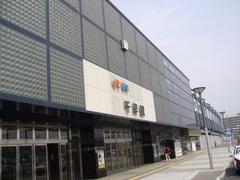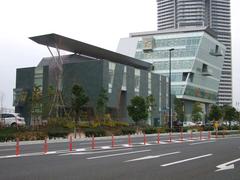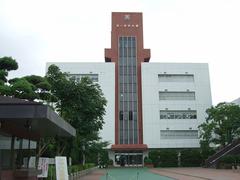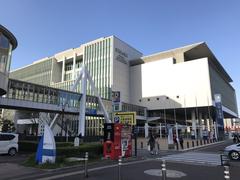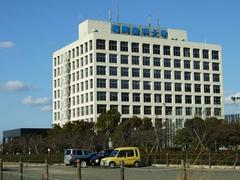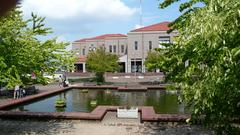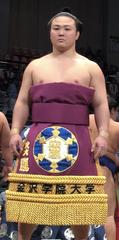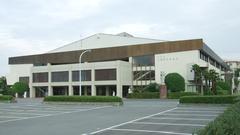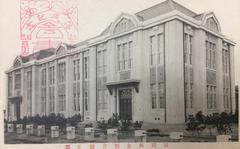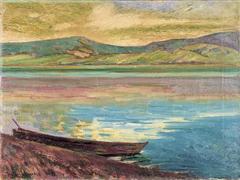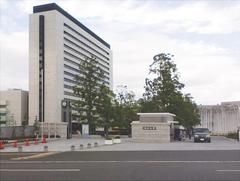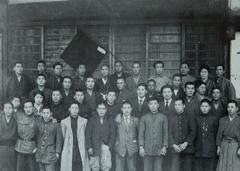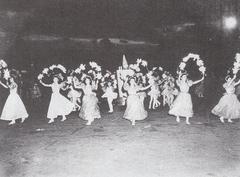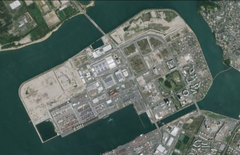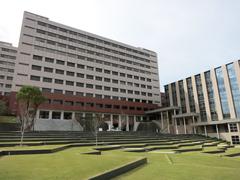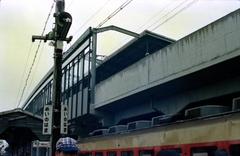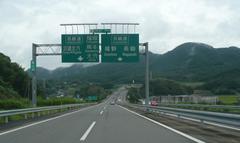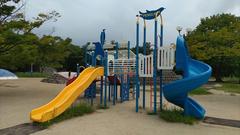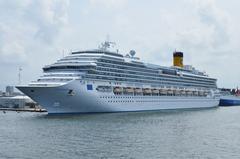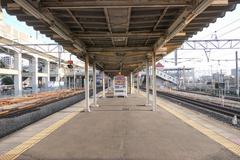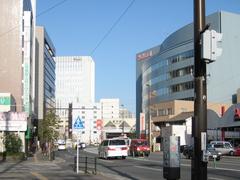Najima Castle: Visiting Hours, Tickets, and Fukuoka Historical Sites Guide
Date: 04/07/2025
Introduction to Najima Castle and Its Significance in Fukuoka
Najima Castle (名島城, Najima-jō) is a symbol of Fukuoka’s feudal heritage, located in the Higashi Ward of Fukuoka City, Japan. Built in the late 16th century during the Sengoku period, this castle played a central role in defending northern Kyushu and administering the region. Its strategic location on a peninsula overlooking Hakata Bay allowed the ruling clans to control critical waterways and protect the area from invaders. Although the original castle structures have disappeared, Najima Castle’s legacy survives through its ruins, relocated gates, and the influence of prominent clans like the Tachibana, Kobayakawa, and Kuroda.
The transition from Najima Castle to the larger Fukuoka Castle marked a significant evolution in regional politics and architecture, reflecting Japan’s movement from an era of conflict to the stability of the Edo period. Today, the Najima Castle site is a public park open year-round, offering scenic views and access to other cultural landmarks such as Sofukuji Temple and Umi Hachiman Shrine. Whether you are a history enthusiast, cultural traveler, or someone seeking a tranquil retreat, Najima Castle provides a unique window into Japan’s samurai era and the development of Fukuoka City (Fukuoka Now; Wikipedia; JapanSaver).
Table of Contents
- Origins and Construction of Najima Castle
- Najima Castle in the Age of Unification
- Architectural Legacy and Relocated Structures
- Decline and Transition to Fukuoka Castle
- Modern Transformation and Legacy
- Visiting Najima Castle: Hours, Tickets, and Access
- Travel Tips and Nearby Attractions
- Frequently Asked Questions (FAQ)
- Photography, Souvenirs, and Etiquette
- Location, Access, and Facilities
- Best Time to Visit & Visitor Tips
- Conclusion and Call to Action
- References and Further Reading
Origins and Construction of Najima Castle
Najima Castle was established in the late 1500s by Akitoshi Tachibana during a period of intense territorial conflict. Its position on a peninsula used the surrounding sea as a natural moat, allowing for strong maritime defense and control over vital trade routes. The castle featured a multi-bailey design with hon-maru (main bailey), ni-no-maru (secondary bailey), and san-no-maru (tertiary bailey), with the main bailey standing 25 meters above sea level for commanding views (Wikipedia; Fukuoka Now).
Najima Castle in the Age of Unification
Following Toyotomi Hideyoshi’s conquest of Kyushu in 1587, the castle became the residence of Takakage Kobayakawa, Hideyoshi’s trusted general. Najima Castle’s strategic role was reinforced during this time, but its limited land area and restricted growth potential hindered its development as a castle town in the peaceful Edo period.
Architectural Legacy and Relocated Structures
When the Kuroda clan took control of the area after the Battle of Sekigahara (1600), Nagamasa Kuroda recognized Najima Castle’s limitations. He repurposed its materials for the construction of the more expansive Fukuoka Castle, officially abandoning Najima in 1602. Some key architectural elements, such as the Najima-mon gate, were relocated to Fukuoka Castle, while the Kara-mon gate found a new home at Sofukuji Temple (Fukuoka Now).
Decline and Transition to Fukuoka Castle
The move to Fukuoka Castle marked a significant shift in Fukuoka’s political and urban landscape. Fukuoka Castle, built as a “hirayamajiro” (low hill castle), included advanced defensive features like extensive moats and multiple turrets, signaling advances in military architecture and the consolidation of power under the Tokugawa shogunate (article.bespes-jt.com).
Modern Transformation and Legacy
In the 20th century, the Najima area continued to play a role in Fukuoka’s development. The opening of the Najima Seaplane Base in 1930 and Charles Lindbergh’s 1931 seaplane landing are commemorated with a monument and Lindbergh-dori street. Today, the castle grounds serve as a public park, with interpretive signage, walking paths, and proximity to Najima Shrine—a blend of historical memory and community recreation (Fukuoka Now).
Visiting Najima Castle: Hours, Tickets, and Access
- Visiting Hours: The park is open daily from sunrise to sunset, generally 6:00 AM to 7:00 PM (hours may vary seasonally).
- Admission: Entry is free; no tickets or reservations required.
- Access:
- By Train: Take the JR Kashii Line to Najima Station. From Hakata Station, transfer at Kashii. The site is a 15-minute walk from Najima Station.
- By Bus: Several Nishitetsu buses serve the Najima area.
- By Bicycle: Dedicated cycling paths make for a pleasant ride from central Fukuoka (Voyapon).
Travel Tips and Nearby Attractions
- Fukuoka Castle Ruins (Maizuru Park): Expansive grounds with stone walls and panoramic city views.
- Sofukuji Temple: Home to the relocated Kara-mon gate and Kuroda clan mausoleum.
- Najima Shrine: Accessible through a striking row of orange torii gates; historically linked to Empress Jingu and the Tachibana clan.
- Minato 100 Year Park: Adjacent to the ruins; ideal for picnics and family outings.
- Hakata and Canal City: Famous for ramen, shopping, and vibrant nightlife (JapanSaver).
Frequently Asked Questions (FAQ)
Q: What are Najima Castle’s opening hours?
A: The park and ruins are open from sunrise to sunset (typically 6:00 AM to 7:00 PM), with seasonal variations.
Q: Is there an entrance fee?
A: No, entry is free for all visitors.
Q: Are guided tours available?
A: While there are no permanent guided tours, local companies and tourism offices sometimes offer historical walking tours that include Najima Castle Ruins.
Q: How do I get there from Hakata Station?
A: Use the JR Kashii Line to Najima Station and walk about 15 minutes to the site.
Q: Is the site accessible for wheelchairs and strollers?
A: Paths are mostly flat and paved, though some areas near the riverbank may be uneven.
Q: Are restrooms and other facilities available?
A: Yes, public restrooms and benches are available in Minato 100 Year Park and near Najima Shrine.
Photography, Souvenirs, and Etiquette
- Photography: Najima Castle offers dramatic bay views, especially during cherry blossom and autumn foliage seasons. The torii gates at Najima Shrine are a popular photo spot.
- Souvenirs: While there are no shops at the site, omamori (amulets) may be available at Najima Shrine. For more options, visit nearby Hakata or Tenjin.
- Etiquette: Respect the site by not climbing on ruins, disposing of trash properly, and keeping noise levels low, especially near the shrine.
Location, Access, and Facilities
- Location: Najima district, northeast of Hakata center, Fukuoka City, Kyushu.
- Facilities: Grassy mounds, remnants of stonework, interpretive signage, benches, shaded areas, and public restrooms.
- Accessibility: Suitable for most visitors; some terrain may be uneven near the river (Voyapon).
Best Time to Visit & Visitor Tips
- Spring (March–April): Cherry blossoms make for beautiful scenery and ideal picnic weather.
- Autumn (October–November): Pleasant temperatures and colorful foliage.
- Summer: Hot and humid; bring sun protection and water.
- Winter: Quieter, but still accessible; dress in layers.
Tips:
- Visit early or late in the day for cooler temperatures and optimal lighting.
- Bring water and snacks, as food options onsite are limited.
- Wear comfortable shoes for uneven terrain.
- Carry out all trash and keep the park clean.
Conclusion and Call to Action
Najima Castle Ruins offer a peaceful, historically rich escape within Fukuoka City—ideal for history buffs, families, and travelers seeking authentic local culture. Its legacy as a strategic fortress and the precursor to Fukuoka Castle marks it as a landmark of both military ingenuity and urban development. Combine your visit with nearby shrines, parks, and culinary adventures for a complete Fukuoka experience.
For more detailed guides, updates, and curated tours of Fukuoka’s historical sites, download the Audiala app. Follow us on social media for the latest cultural events, travel tips, and exclusive content.
References and Further Reading
- Najima from Castle Town to Lindbergh Landing Place, Fukuoka Now
- Najima Castle, Wikipedia
- Historic Fukuoka: Castles, Shrines & Canal City Walk, JapanSaver
- Najima Shrine, Castle Ruins, and Minato 100 Year Park, Voyapon
- Fukuoka Castle History and Visitor Guide, Article Bespes JT
- Fukuoka City Overview, Japan Guide
- Fukuoka Itinerary and Attractions, Japan Activity
- Najima Castle Ruins History, Rekishi Nihon
